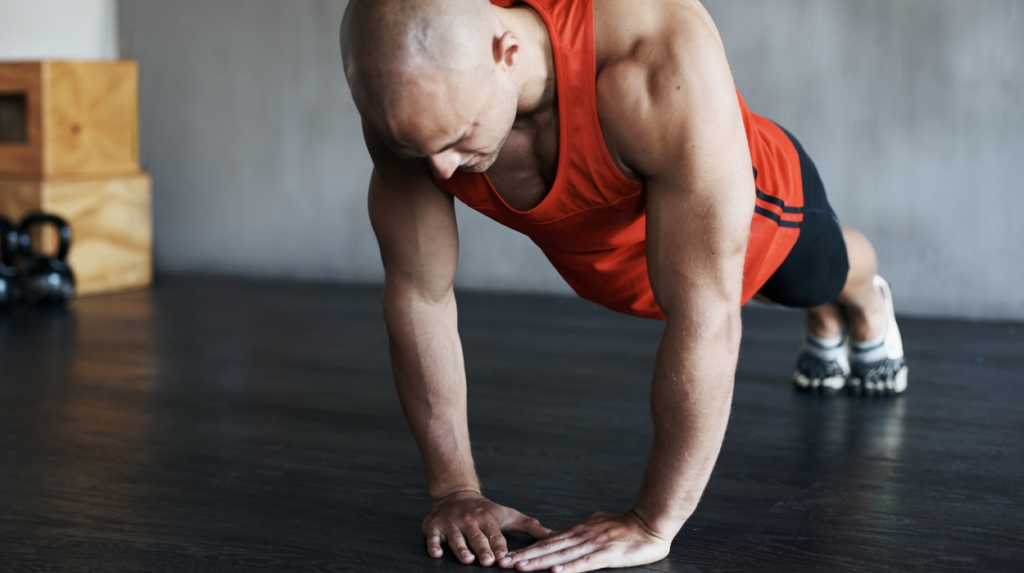Did you know? Many people believe that biceps can only be built through endless curls with dumbbells and barbells. But the truth is, your body alone is one of the most powerful tools you can use for sculpting impressive biceps.
Whether you’re at home, traveling, or simply want to switch things up, bodyweight biceps exercises can be just as effective — sometimes even more so!
Forget the gym for a moment and embrace the idea that your biceps can grow stronger and bigger using just gravity and smart movement.
Let’s dive into 13 of the best bodyweight-based biceps exercises, each designed to challenge your muscles, improve strength, and build aesthetic arms — no equipment required.

What Happens After 30 Days of Bodyweight Biceps Training?
| Positive Changes | Potential Challenges |
|---|---|
| Noticeable increase in biceps strength. | Muscle soreness, especially if you’re new to bodyweight training. |
| Improved muscle tone and definition in the arms. | Plateau if you don’t increase difficulty or reps. |
| Enhanced pulling power and grip strength. | Risk of overuse injuries if proper recovery isn’t followed. |
| Better core stability and posture from compound movements. | Frustration if you expect drastic size gains too soon. |
| Increased confidence and motivation to keep training. | Fatigue if you don’t pair exercise with proper rest and nutrition. |
| Stronger tendons and joints, reducing injury risks long-term. | Possible calluses or hand discomfort from exercises like chin-ups. |
Do’s & Don’ts for Bodyweight Biceps Exercises
| Do’s | Don’ts |
|---|---|
| Warm up before starting to prepare muscles and joints. | Skip warming up; it increases injury risk. |
| Focus on controlled, slow movements to maximize tension. | Use momentum or fast, jerky movements. |
| Engage your core and stabilize your body during each rep. | Let your body sag or lose form during exercises. |
| Start with easier variations (like towel rows or negative chin-ups) if you’re a beginner. | Jump into advanced exercises (like one-arm chin-ups) without building base strength. |
| Perform each rep with full range of motion. | Cut the range of motion short to squeeze in more reps. |
| Allow for adequate rest and recovery between sessions. | Train biceps every day without proper recovery. |
| Combine these exercises with good nutrition and hydration for muscle growth. | Ignore your diet or rely solely on exercise for muscle building. |
| Gradually increase reps, duration, or difficulty as you get stronger. | Stick to the same routine without progression. |
| Prioritize proper hand positioning (underhand for biceps emphasis). | Use a grip that’s too wide or too narrow for your level. |
| Listen to your body and modify exercises if needed. | Push through pain or discomfort during movements. |
1. Chin-Ups
Chin-ups are a classic for a reason. This pulling movement targets the biceps and also strengthens the upper back and shoulders.

How to Do It:
- Grip a pull-up bar with palms facing toward you (shoulder-width).
- Hang fully, then pull yourself up until your chin clears the bar.
- Lower with control.
Interesting Fact: Chin-ups engage more biceps fibers than pull-ups, making them a biceps-dominant exercise.
2. Negative Chin-Ups
If you can’t yet do a full chin-up, negatives help build the strength you need.

How to Do It:
- Use a step or a chair to get into the top chin-up position.
- Slowly lower yourself as controlled as possible.
- Repeat for several reps.
3. Inverted Rows (Underhand Grip)
Inverted rows mimic barbell rows but with your body weight. The underhand grip shifts more emphasis onto your biceps.

How to Do It:
- Set a bar at waist height and lie underneath it.
- Grab it with an underhand grip, hands shoulder-width apart.
- Keep your body straight, pull your chest to the bar, and lower slowly.
Myth Buster: Many assume inverted rows only target the back, but the underhand grip brings the biceps into play.
4. Commando Pull-Ups
This variation challenges your grip and focuses intensely on each arm individually.

How to Do It:
- Grab the pull-up bar with your hands in a neutral (hammer) grip.
- Pull your body toward one hand, then switch to the other side.
- Alternate reps to work both arms.
5. Isometric Chin-Up Hold
Holding your body in a static position maximizes time under tension for your biceps.

How to Do It:
- Pull yourself into the chin-up position and hold as long as possible.
- Focus on squeezing the biceps.
- Lower when fatigued.
6. Wall Handstand Hold
While it may seem like a shoulder-dominant move, holding a handstand activates the biceps as stabilizers.

How to Do It:
- Kick up into a handstand against a wall.
- Keep arms slightly bent to engage the biceps.
- Hold for 20-60 seconds.
Fun Fact: Gymnasts develop strong biceps from bodyweight holds like these!
7. Towel Rows
No pull-up bar? No problem. A sturdy towel over a door can turn into a powerful biceps exercise.

How to Do It:
- Drape a towel over a closed door.
- Grip both ends and lean back.
- Row your chest toward the door while squeezing your biceps.
8. Bodyweight Curls
This move mimics traditional curls but with your own weight.

How to Do It:
- Use a low bar or rings at waist height.
- Stand back and lean your weight into the bar.
- Curl yourself toward the bar, keeping your elbows high.
9. Close-Grip Push-Ups
Though primarily for the triceps, this variation also recruits the biceps as stabilizers.

How to Do It:
- Get into a push-up position with hands close together under your chest.
- Lower down, keeping elbows tucked.
- Push back up while maintaining form.
10. Reverse Plank with Elbow Flexion
A unique movement combining core, glutes, and biceps.

How to Do It:
- Sit on the floor, legs extended, hands behind hips.
- Lift hips into a reverse plank.
- Bend elbows slightly to engage the biceps, then straighten.
11. Doorway Rows
A simple but effective way to challenge your pulling strength.

How to Do It:
- Stand facing an open doorway.
- Hold both sides of the doorway, and lean back.
- Pull your chest forward by bending your elbows and squeezing your biceps.
12. Diamond Push-Ups with Forward Lean
Adding a forward lean shift more tension to the biceps.

How to Do It:
- Set up in a diamond push-up stance (hands together under your chest).
- Lean your body forward over your hands.
- Perform push-ups while maintaining the lean.
13. One-Arm Chin-Up Progression
The ultimate bodyweight biceps challenge!

How to Do It:
- Start with assisted one-arm holds using a towel or band.
- Gradually reduce assistance as strength improves.
- Progress to a full one-arm chin-up over time.
Did You Know? Mastering a one-arm chin-up requires not just biceps strength, but also intense grip, core stability, and tendon conditioning.
Wrapping Up
You don’t need heavy weights to get sculpted biceps. These 13 bodyweight-based biceps exercises prove that your own body is a powerful tool for strength and definition.
Try adding them to your weekly routine, and you’ll start seeing not only stronger arms but also improved control and stability throughout your upper body.
Frequently Asked Questions (FAQs)
Can bodyweight exercises really build big biceps?
Yes! Bodyweight exercises like chin-ups, inverted rows, and bodyweight curls can effectively target and build biceps. Consistency, proper form, and progression (increasing reps, intensity, or difficulty) are key to muscle growth.
Are bodyweight biceps exercises suitable for beginners?
Absolutely. Many bodyweight biceps exercises, like doorway rows and negative chin-ups, are beginner-friendly and can be scaled to match fitness levels.
How often should I train my biceps with bodyweight exercises?
Aim for 2–3 times per week, ensuring enough recovery between sessions. Overtraining can hinder progress and increase injury risk.
Do I need any equipment for these exercises?
Most of these exercises require minimal or no equipment. You can use a pull-up bar, sturdy doorway, towel, or resistance bands for some movements, but many can be performed with just bodyweight.
How long will it take to see results?
This depends on your starting point, consistency, and diet. With regular practice, many see noticeable improvements in strength and muscle tone within 4–8 weeks.
What if I can’t do a full chin-up?
Start with assisted variations like negative chin-ups or towel rows. Over time, as your biceps and pulling strength improve, progress toward full chin-ups.
Can I combine these with other upper body exercises?
Definitely! Combining bodyweight biceps exercises with push-ups, dips, and core work creates a balanced upper body routine.
Will these exercises also work my back and shoulders?
Yes, many pulling exercises like chin-ups and inverted rows also target the back and shoulders, offering a comprehensive upper body workout.
Are these exercises safe for everyone?
Most are safe for healthy individuals. However, if you have pre-existing injuries or medical conditions, consult a healthcare professional before starting. Always prioritize good form.










